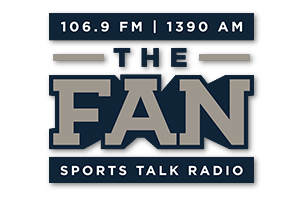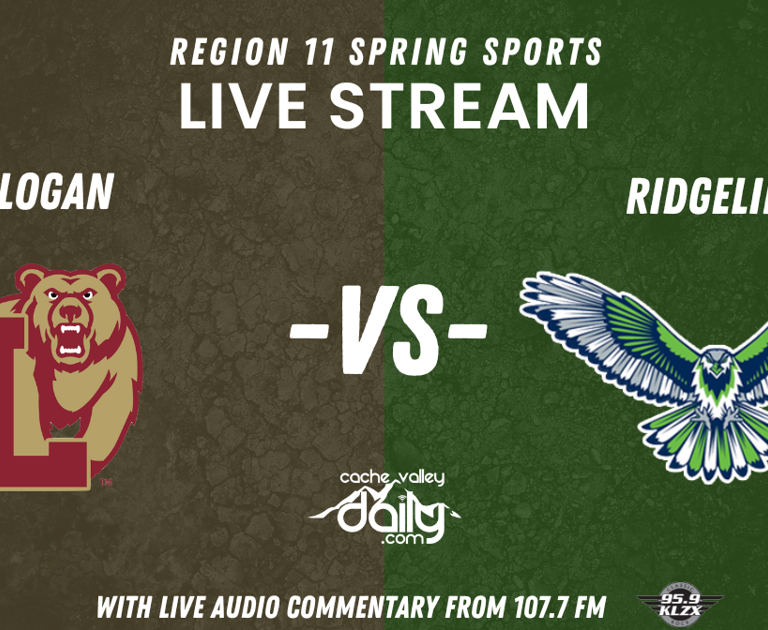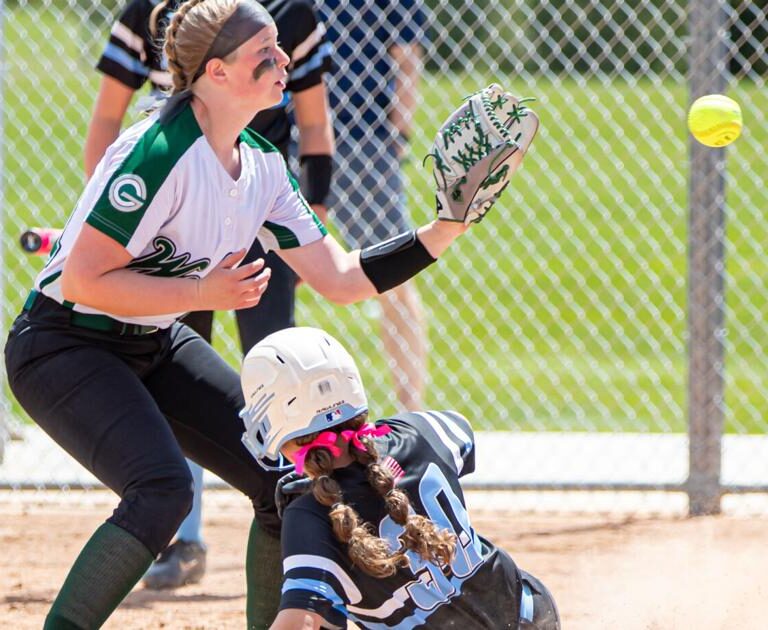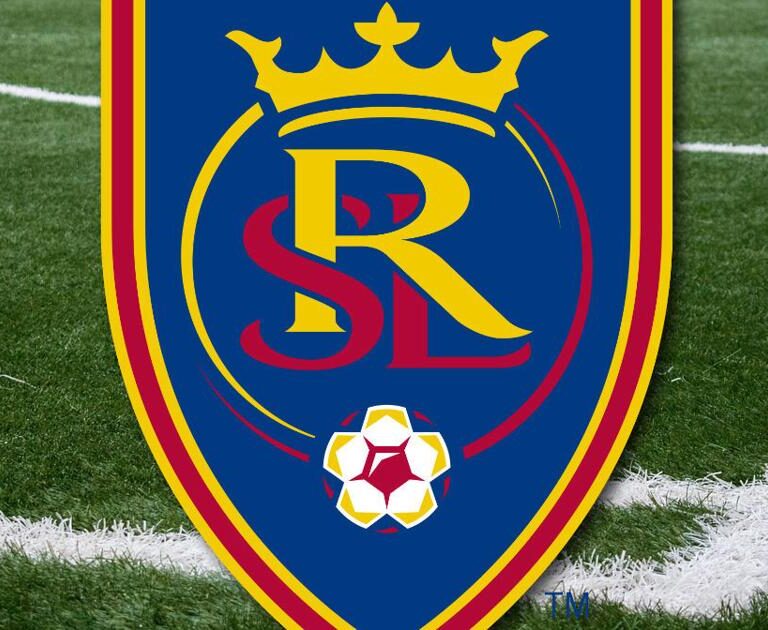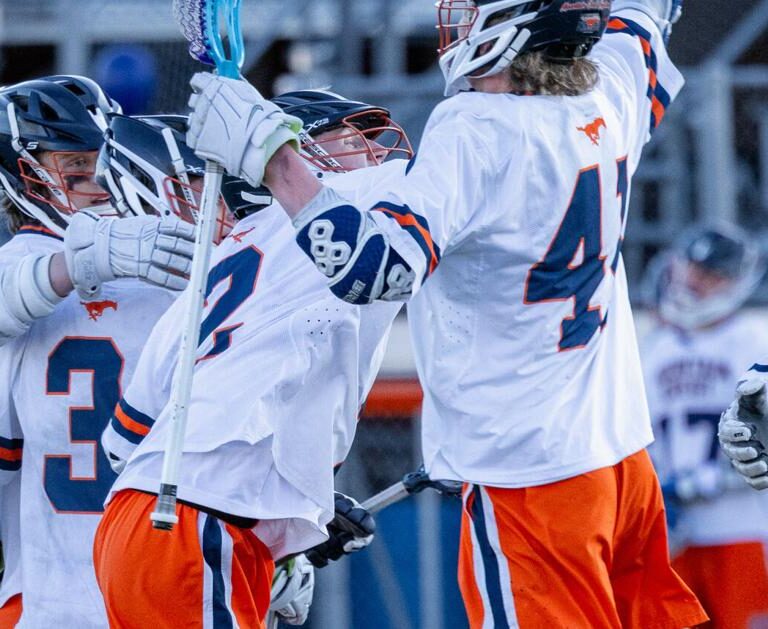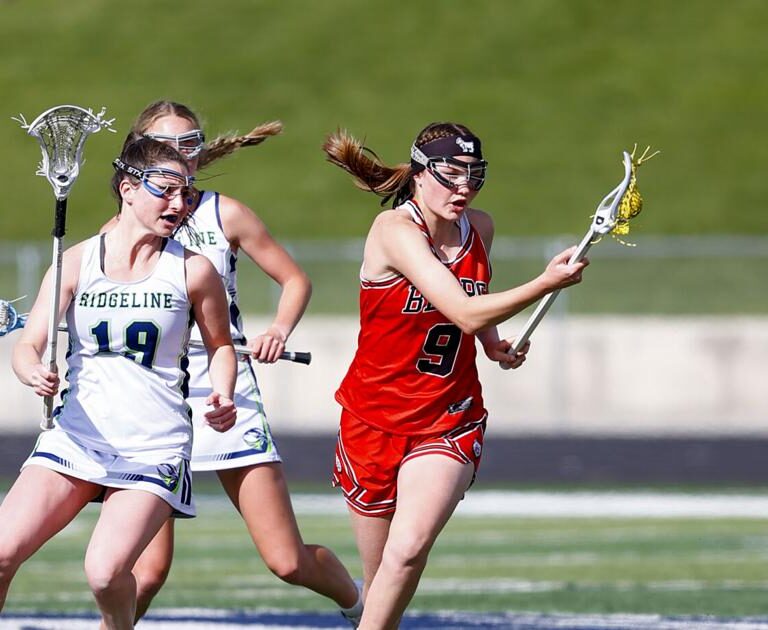Cody McMahon, right, of Utah State, scores in the first quarter against Ball State in the Las Vegas Bowl, Dec. 17, 1993. (AP Photo)
Later this month Utah State will appear in its 15th official bowl game. It’s not a glamorous number, tied for 76th-most in the country, but it’s a drastic turnaround from what the situation was just 12 years ago. In 2010, the Aggies had appeared in five bowl games in the then-108 year history of collegiate bowl games. Since then (including this year), Utah State has been in 10 bowl games in 12 seasons.
Thanks to this recent trend, USU’s bowl history is no longer able to be told in the span of one article, and must be divided. There’s a fairly clean dividing line, though, between the 20th and 21st century. It doesn’t split the number of bowl games in half, but the history of recent bowls is more well-known so dedicating more time to these older games fits.
That it took 54 years into Utah State’s football history to appear in a bowl isn’t anything to be particularly ashamed of (BYU’s first bowl appearance wasn’t until 1974 and Utah had only been to one bowl by the time Utah State played its first bowl game). Bowl games weren’t nearly as prevalent in early college football history as they are today, limiting access. So when USU went 7-0-1 in 1917 there wasn’t really a bowl game to be accepted to. The Aggies didn’t have any really good seasons fit for a bowl game until 1936 when they went 7-0-1 (again). USU was extended an invitation to the Sun Bowl that year but did not accept the invitation because two of its players – Kent Ryan and Carl “Moose” Mulleneaux, had already accepted invitations to the East-West All-Star game that was set to be played the same day.
With all that preamble, let’s look at the first six bowl appearances in Utah State program history.
Raisin Bowl (1946)
January 1, 1947 | Ratcliffe Stadium (Fresno, CA)
Utah State – 0 | San Jose State – 20
Ten years after declining an invitation to the Sun Bowl, Utah State finally put together another bowl-worthy season (although at the time it was still “Utah Agricultural College” and not “Utah State”). The “Utags” fielded three invitations for bowls, the Raisin Bowl, Dixie Bowl and Sun Bowl. Rumors at the time suggested the Aggies were going to accept the invitation from the Dixie Bowl and play Villanova which would include a $20,000 payout (just under $280,000 in 2022). But on Dec. 4 Utah State wired its acceptance to the Raisin Bowl despite the lower payout of $10,000 (just under $140,000 in 2022) as that bowl was deemed to be better for the Aggies long term.
Unfortunately for USU, the game didn’t go very well at all. They were outgained 287-124 by San Jose State. But despite that disparity, Utah State had chances to score. In the first quarter, the Aggies recovered a fumble on the San Jose 38 and drove inside the 10-yard line. Running back Jay Van Noy ran the ball to the one-yard line but the play was called back on an Aggie penalty. The next play resulted in an interception, giving the Spartans the ball back. San Jose scored a touchdown in the second quarter and then twice in the third to go up 20-0. Late in the game, the Aggies intercepted the Spartans and got the ball to the one-yard line, but were stopped on downs.
The main reason for Utah State playing poorly in this matchup likely came down to lack of preparation. According to one source, the Aggies only practiced four times between their last game on Dec. 7 and the Jan. 1 contest, with those practices reportedly not being all that strenuous. The lack of preparation hindered what had been a very good Utah State team that went unbeaten in seven straight games prior to the bowl game, including solid wins over the University of Utah and Denver.
Grape Bowl (1947)
December 13, 1947 | Grape Bowl Stadium (Lodi, CA)
Utah State (6-4) – 21 | Pacific (8-1) – 35
This bowl is a source of minor misinformation in Utah State’s bowl history. Count the number of bowl summaries in both parts of this series and you will count 15 games, with an eventual 16th to be played this year. As such, USU reports that this year will be the school’s 16th bowl appearance. And yet the perceptive among you will remember the opening sentence of this article that states the Aggies will play in its “15th official bowl game.” That wording was very deliberate, and it’s necessary because of this game.
The long and short of it is that the Grape Bowl was never a sanctioned NCAA bowl game. As such, it is not included in the official bowl game tally for the Aggies, nor for its opponent in the game. The scores are listed in the annuls of NCAA history, but not officially recognized as bowls.
Utah State did not earn its way into the Grape bowl by way of winning most of its games or proving value to the bowl organizers. The Aggies were invited to participate before the regular season even started. In June 1947, the Grape Bowl announced Utah State would face Pacific six months later. This drew some minor criticism, specifically from the Raisin Bowl who held the rights to host the champions of the Rocky Mountain Conference (which USU played in) and the California Collegiate Conference (which Pacific was a member of). Should both the Aggies and Tigers win their respective conferences, they’d be slated to play in the Raisin Bowl mere weeks after playing in the Grape Bowl. But that gap in time wound up being enough to keep both sides content with the situation.
The final score of the game showed a lopsided Pacific victory, and indeed it was, but early on it might have gone a different way. Pacific marched 72 yards in 13 plays on its opening drive to score the first seven points of the game but Utah State looked like it might do the same. The Aggies went 65 yards on its responding drive, all the way to the one-yard line. Then disaster struck Utah State as it fumbled the ball and it was not only recovered by the Tigers, but returned 99 yards for a touchdown. Rather than 7-7 in the first quarter, Pacific led 14-0. By halftime it was 28-0.
Utah State had the beginnings of a comeback, outscoring Pacific 14-7 in the third quarter to draw within 35-14. But the Aggies simply couldn’t muster enough on offense to complete a rally. They did add another touchdown in the fourth quarter to make it 35-21 by the end of the game.
Coincidently enough, Pacific did end up playing in the Raisin Bowl after defeating the Aggies since the Tigers were champions of their conference. It led to the Tigers playing in two bowl games in the same calendar year. Technically, Utah State could say the same as it played on Jan. 1, 1947 and then in December that same year.
Sun Bowl (1960)
December 31, 1960 | Sun Bowl (El Paso, TX)
Utah State – 13 | New Mexico State – 20
Twice in its early bowl history, Utah State declined invitations to the Sun Bowl, but in 1960 the Aggies finally accepted the invite, having spent the last 13 years at home during bowl season.
The 1960 season was the first great season by Utah State under head coach John Ralston. The Aggies were ranked as high as 18th in the AP Poll and only suffering their first loss in the last game of the regular season, a 6-0 defeat at Utah. New Mexico State were even more formidable than Utah State, though, with its perfect record of 10-0 going into the bowl and were ranked 17th in the final AP Poll that was released before the Dec. 31 contest.
Utah State started off the scoring on a touchdown drive set up by a 52-yard punt return by Ernie Reese (which set a Sun Bowl record). Tom Larscheid ran the ball in from 13 yards out to give the Aggies a 7-0 lead. The southern Aggies then tied the game with a touchdown drive of its own. Utah State scored its second and only other touchdown after a 15-play, 80-yard drive, capped off by Dolph Camilli Jr.’s 11-yard touchdown run. However, the point-after kick was missed low so the score was 13-7, which held through the end of the first half.
In the third quarter Utah State got an object lesson in why New Mexico State running back Bob Gaiters earned the nickname “Bad News.” Less than three minutes into the second half, Gaiters took a pitch from 32 yards out, skirted around the edge and scampered all the way to the end zone. A successful PAT put NMSU up 14-13. In the fourth quarter the southern Aggies put together a 66-yard touchdown drive, but they missed a PAT of their own so Utah State had a chance to tie without a two-point conversion late in the game.
Utah State’s attempted game-tying drive made it to the New Mexico State 21-yard line, but on fourth down, USU’s Doug Mayberry was stopped shy of the line to gain. NMSU took over possession and ran the rest of the time off the clock.
The star of the game, and its named MVP, was New Mexico State quarterback Charley Jonson who completed 18-of-26 passes for 190 yards two touchdowns and one interception. That performances was sorely needed as Utah State’s defense, led by future NFL Hall of Famer, Merlin Olsen, held a vaunted NMSU rushing attack to just 44 net yards on 32 attempts. Gaiters, who averaged 133.8 rushing yards per game, netted just 65 (32 of those on a single play) on 13 carries. Johnson was likely sacked several times (though sacks were not an official stat at that point) as he is recorded as having -37 yards rushing on seven carries.
Utah State had the opposite day offensively as New Mexico State, rushing the ball effectively against a defense that stacked the line to stop the run. USU were led by Mayberry who had 91 yards on 19 attempts and Larscheid with 83 yards on 16 attempts. Overall, USU gained 268 yards on the ground with both touchdowns coming via the run game. In the passing game though, the Aggies were entirely ineffective, gaining zero yards through the air, albeit on just four pass attempts all game (all of which fell incomplete).
This matchup was clearly the most thrilling of Utah State’s first few bowl games, and remains one of the most closely contested in its entire bowl history. New Mexico State head coach Warren Woodson said he was “scared” throughout the entire game, displaying just how intense this game was for the reported 16,000 people who watched the game.
Gotham Bowl (1961)
December 9, 1961 | Polo Grounds (New York, NY)
Utah State – 9 | Baylor – 24
The Gotham Bowl was a short-lived event that started off on the wrong foot. The first edition of the Gotham Bowl was supposed to take place in 1960, but multiple teams, including Syracuse, Holy Cross, Ohio State and Colorado, bailed out and the game didn’t happen. Only two editions would be played with the 1961 being the first of those two. Financially, the bowl was a failure as small crowds were present in the biting cold of Yankee Stadium to watch teams from Texas, Nebraska, Utah and Florida play each other.
Utah State took on Baylor in the 1961 game, the Aggies ending the season ranked 10th in the AP Poll – a rank that remains the highest ever achieved in USU football history. John Ralston’s Aggies were at the top of their game, with an unbeaten 9-0-1 record, ranking first out of 111 teams in points scored per game, and only allowing 9.3 per game, 17th in the country. Baylor, conversely, weren’t quite as formidable on paper with a 5-5 record and averages of 19.3 points scored and 15.7 points allowed.
On the very first play from scrimmage, Utah State suffered a setback. Fullback Ray Harward, who averaged a team-best 6.8 yards per rush that year, was knocked unconscious and removed from the game. But that didn’t impact the game nearly as much as the numerous mistakes the Aggies made. Utah State lost five fumbles and had three passes intercepted by the Bears. All 24 of Baylor’s points were set up directly by those turnovers.
Baylor went up 10-0 in the first half, with a 14-yard touchdown run by game MVP Ronnie Bull and a 22-yard field goal by Carl Choate. In the third quarter Utah State drew back within one possession, driving 40 yards down the field to set up a 36-yard field goal by Jim Turner. Shortly after, though Baylor added another touchdown to go up 17-3 and kept the Aggies at arm’s length the rest of the way to the 24-9 victory. Utah State did score a touchdown eventually, Bill Munson ran it in from four yards out, but a two-point conversion failed.
Utah State’s offense averaged 280 rushing yards per game but were held to 153 yards rushing by Baylor, the lowest of the year for the Aggies. It wasn’t until late in the first half that USU even crossed midfield on offense. In the passing game, the Aggies completed as many passes to themselves as they did to the Bears (three each) and only got 41 positive yards through the air.
The “Left Out Bowl(s)” 1971-1974
Utah State’s years as an independent were damaging to its football program in many ways of which lack of bowl game tie-ins was just one. Despite finishing the 1971, 1972 and 1974 seasons with the exact same record of 8-3 (and finishing the 1973 season 7-4), the Aggies were left out to dry for bowl games each year.
That didn’t mean USU were completely lacking in postseason festivities. Plans were made multiple years to face teams abroad. In 1971 the Aggies made a trip to Japan after the regular season to face a team comprised of Japanese university students. Utah State was the first American collegiate football team to play a game on Japanese soil. The Aggies were quite simply the bigger and better team, downing the Tokyo All-Stars, as they were dubbed, 50-6. That game was only part of the impact USU head coach Chuck Mills would have on the sport of football in Japan. His efforts in growing the sport there are memorialized in the “Mills Trophy” which is the yearly MVP award given to the best collegiate football player in Japan.
In 1972 Utah State finished 17th in the Coaches Poll but was again passed over, much to the growing dismay of local fans and media. But in November the Aggies received permission to play in a Dec. 3 football game against an all-star team from Germany. However, no record of that game happening exists, perhaps due to the fact that around the time that trip would have taken place USU’s athletic director, Frank Williams, resigned and Mills was coaxed away to accept the coaching position at Wake Forest.
At the conclusion of the 1974 season the Aggies had won the Beehive Boot, given to the best team in the state of Utah. And yet, it was BYU who went to a bowl game – the Cougars’ first-ever appearance – to represent the mountain west region with Utah State being left at home. All that was left for Aggies head coach Phil Kruegar to do was take a shot at the Fiesta Bowl (who would host WAC champion BYU and Oklahoma State) by calling it the “Fiasco Bowl” Kruegar also needled BYU and the Fiesta Bowl by citing Sports Illustrated writer, Joe Jares, in saying the Cougars were the second-best team in the region since the Aggies had beaten them 9-6 earlier that year.
When Kruegar made those comments, Utah State still had a regular season game against San Diego State left on his schedule. The Aztecs had similarly been left out of a bowl game, leaving one writer to suggest that game be called the “Left Out Bowl.”
Las Vegas Bowl (1993)
December 17, 1993 | Sam Boyd Silver Bowl (Las Vegas, NV)
Utah State – 42 | Ball State – 33
Excluding the initial gap between the start of USU football and its first bowl game in the 1946 season, the 32-year span between USU’s Gotham Bowl appearance and its Las Vegas Bowl appearance is the longest bowl-game drought in school history and is the longest between bowl appearances.
That Utah State even appeared in a bowl in the 1993 season was a miracle in and of itself, one which fans of this year’s Aggies can relate to. After winning its first game, USU lost five straight on its way to a 1-5 record by mid-October. But the Aggies turned around the season completely by winning five straight games to end the regular season to not only become bowl eligible, but to win the Big West Conference championship and earn an automatic qualifier to the recently formed Las Vegas Bowl (1993 was the second year of the Vegas bowl and was dubbed “Las Vegas Bowl II” by multiple writers).
USU’s bowl opponent, Ball State, had seen a bit more success in recent years, including a bowl appearance in 1989. BSU also had a much better 8-2-1 record going into the game. Still, the game looked like a good matchup between teams from the Big West and Mid-American conferences. Then-USU head coach Charlie Weatherbie said he “wouldn’t be surprised one bit to see this [game] come down to the final seconds.”
Weatherbie would be pretty much entirely wrong in that sentiment as his Aggies went on to dominate Ball State. Utah State racked up a 21-0 halftime lead and held a 42-19 lead with 11:34 left in the game after a 32-yard pick six by Donald Toomer. USU quarterback Anthony Calvillo accounted for 336 total yards (286 passing, 50 rushing) with three passing touchdowns and two interceptions which earned him MVP honors. Calvillo wasn’t the only offensive force though as his teammate, sophomore running back Profail Grier, ran for 142 yards on 33 carriers, both of those marks being USU bowl records at the time (the 33 carries is still the Aggie bowl game record).
Ball State did find a way to make the game somewhat interesting. It scored the final two touchdowns of the game to make it a two-score game with just over five minutes to play, but Utah State were able to use the clock to its advantage and close the night out with its first-ever bowl victory.
Humanitarian Bowl (1997)
December 29, 1997 | Bronco Stadium (Boise, ID)
Utah State – 19 | Cincinnati – 35
One writer called the mismatch between Utah State and Cincinnati a meeting between “two of the most unlikely bowl teams of the year.” The Aggies began the year 2-4, winning four straight games to get to six wins before losing to North Texas in the final week of the season in a 51-48 shootout. And Cincinnati hadn’t appeared in a bowl game since 1950, which was the longest Division I bowl drought up until the moment they stepped on the unsightly blue turf in Boise.
This meeting marked the inaugural edition of what is now known as the Potato Bowl. Organizers were able to offer a $750,000 payout to both teams (Cincinnati reportedly somehow blew $450,000 of that just getting its team to the bowl) and got a deal with the Big West to get its conference champion, Utah State, to play in its bowl. Unfortunately, while both teams were eager to play and organizers were thrilled to host the game, off-the-field troubles distracted from the eventual game.
Firstly, Utah State head coach John L. Smith accepted a new head coaching position at Louisville, but was awkwardly staying on for one more game with the Aggies. This may have had multiple knock-on effects, one of which could have been lower ticket sales for USU. Reportedly less than 1,500 tickets were sold to Aggie fans, though Cincinnati hardly fared better as less than 2,000 tickets were reportedly sold to the Cincinnati faithful. The roughly 14,000 other spectators at the game were all locals come to see the first-ever bowl hosted in Idaho.
While in Boise, Smith apparently decided not to set a curfew for his team and it came back to bite him. On the Friday night before the Monday game, 13 local police officers responded to a 911 call at “Joe’s Down Under” dance club involving as many as 20 USU football players. The incident was supposedly “resolved peacefully” but the club owner stated the Aggie players acted rather arrogantly “walking across the middle of the dance floor with beer in their hands acting like they were the king of the world, sauntering and strutting” according to a quote in The Salt Lake Tribune. When those players were asked to leave other USU players physically blocked the door, preventing bouncers from tossing out the offending Aggies.
Eventually the game was played and Utah State did not fare well at all. Incoming head coach Dave Arslanian patrolled the sidelines, observing alongside his predecessor the Cincinnati domination in the first half. The Bearcats went up 21-0 in the first half and eventually held a 28-0 lead in the second half. Cincinnati head coach Rick Minter and game MVP Chad Plummer credited the offensive line for controlling the line of scrimmage.
Plummer, for his part, turned in a triathlon performance, completing 5-of-9 passes for 62 yards, rushing 15 times for 53 yards and a touchdown, and catching four passes for 64 yards. Smith said the all-around Plummer was “too much for us” and that they “couldn’t keep track of him.”
Utah State would eventually get on the scoreboard thanks to a Steven Smith 75-yard touchdown reception from Matt Sauk, a USU bowl game record. Smith ended the game with four receptions for 136 yards. Utah State also got touchdowns from Melvin Blue (three-yard run with 29 seconds left in the third quarter) and Brent Passey (10-yard fumble recovery with 14:18 left in the game).
